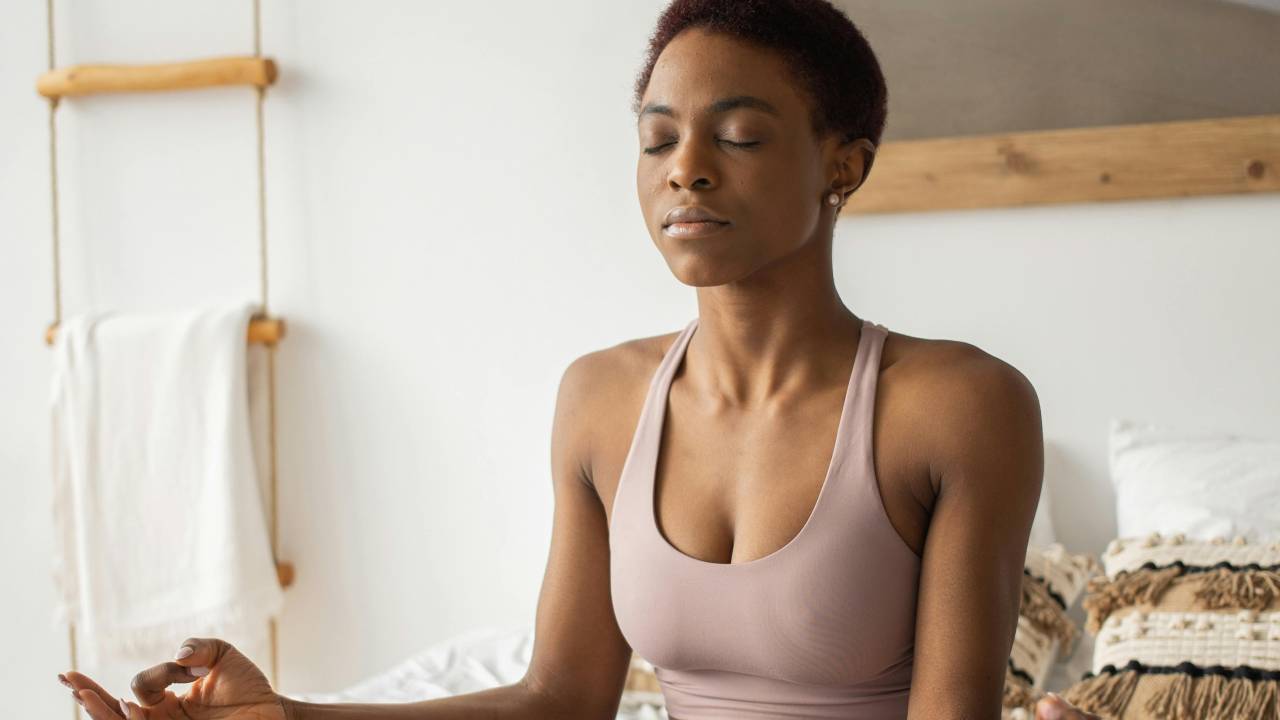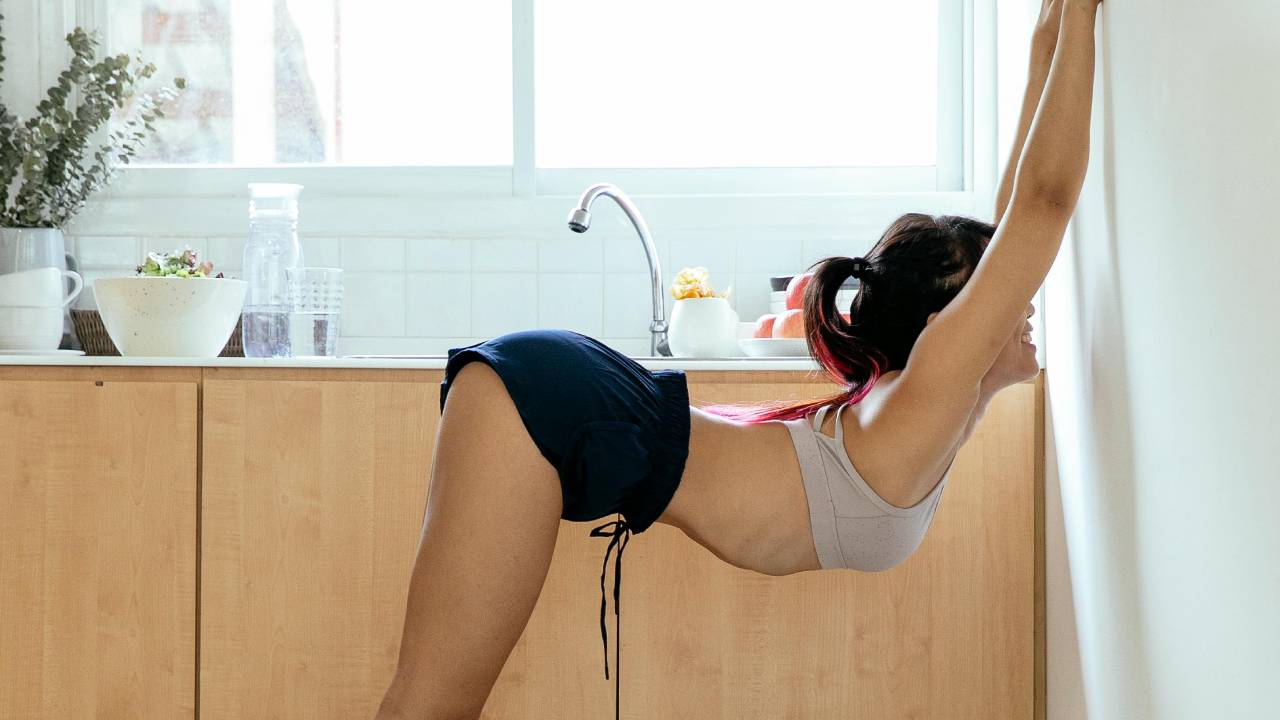
A short yoga practice before lying down on the best mattress is ideal for relaxing the body and bringing the mind into a still place. You can let go of the day you’ve had by focusing on your breath in nourishing postures to help your body enters its rest and digest function, allowing you to unwind and reduce your stress.
There are many yoga postures you can do before bed but the thing that really helps are longer holds. Rather than doing a yoga flow on the best yoga mat, try holding these less practiced postures for a deeper release and deeper sleep.
1. Wall stretch
This is one of the most delicious postures for stretching out at the end of the day as it stretches the whole body including the shoulders, chest, back of the legs, spine and lower back. It will help create space through the neck and upper back, allowing you to free up the areas that might have got tight during the day. It involves using a wall so make sure you have a space big enough to place your hands hip distance apart on the wall.
Come to the wall and place your hands hip height and distance on the wall, palms flat. Spread your fingers and begin to step yourself away from the wall until your ankles are under your hips, ending up in an L-shape. From here, step your feet hip distance apart and press your hands firmly into the wall, keeping your fingers spread wide. Keep your head in line with your arms and roll your shoulders down away from your ears while you keep pressing into the wall.
Allow your chest to drop to open the shoulders more, bringing the shoulder blades together on the back. Slightly lift the pubic bone to lengthen the lower back as this will help release the back muscles but also keep the stretch active in the shoulders. Breathe deep, calming breaths here. As you press your hands into the wall, imagine someone is gently pulling your hips back. This will help you to create more space in the spinal column.

If it’s too strong on the back of the legs with straight knees, keep a soft bend in the knees so you can maintain the L-shape and not create a hunched spine. This posture is all about stretching out so as much as possible we want straight lines through the body. To exit the posture, bend the knees and begin to walk into the wall until you can release fully.
2. Dangle pose
Dangle pose has many benefits, some of which help with sleep. Gravity allows your spine and back muscles to relax while it also pulls your shoulders down to release any neck tension. Not only this, but a forward bend is said to help quiet the mind, turning us inwards and drawing our attention away from the external world.
Dangle is a posture of simplicity. Come to stand with your feet hip distance, or wider, apart. Inhale and lift your arms up overhead and exhale, fold forward. Cross your arms and take hold of your wrists, forearms or elbows, if you can reach. Allow yourself to dangle over your legs with your elbows being drawn down towards the earth. Let go of your shoulders and the whole of the back of the body. If you’re experiencing any discomfort with the legs straight, bend the knees until you feel comfortable. Stay here enjoying deep and nourishing breaths. Sometimes it can be nice to sway a little from side to side, but this is an optional extra.
3. Fish pose
This yoga posture isn’t often linked with better sleep but it has a secret weapon. Although often practiced mid flow, we’ve placed it at the end of this soothing practice as it can help expand your lung capacity. Deeper breathing helps to quiet the mind and drop us into our rest and digest function and fish pose helps us to breathe deeply, beyond our normal capacity. Staying in this posture, breathing deeply, can help send you off into a deep sleep. You may even fall asleep on your mat!
Come to lie on your back and stretch your legs out, keeping them together. Flex your feet so your toes point to the ceiling and your heels are moving away from you. Lean on to your right side and wiggle your left arm underneath you, elbow tucked under and palm flat on the floor. Lean over to your left side and wiggle the right arm underneath you. Again, tuck your elbow under and make sure the palm is flat. The more you can tuck your elbows under you, the more lift and lung capacity you will gain.
Take an inhale and press into your elbows, so your head and upper back can lift off the floor so you can gaze at your feet. On an exhale, drop your head back so the crown of the head either reaches the floor or is heading that way. If there’s any strain in your neck, place a yoga block underneath your head for support. Keep pressing into your elbows to lift the upper back away from the floor. Feel the lungs and breathe deeply. Stay for as long as you can, up to a minute, before releasing. To release, press into your elbows a little more and using your neck muscles, lift your head up to look back at your feet. Exhale, and drop back so you’re led flat on your back. Remove your hands from underneath you and relax in savasana.







